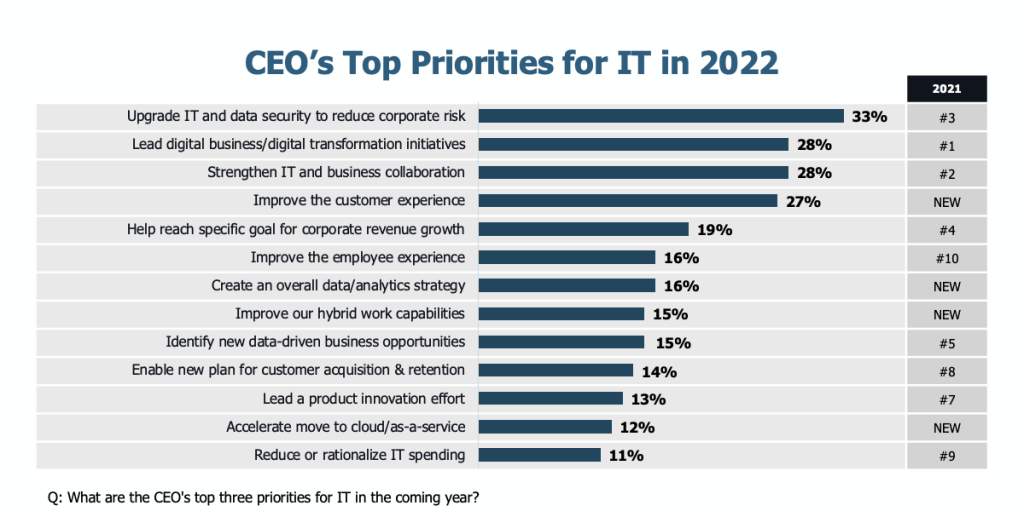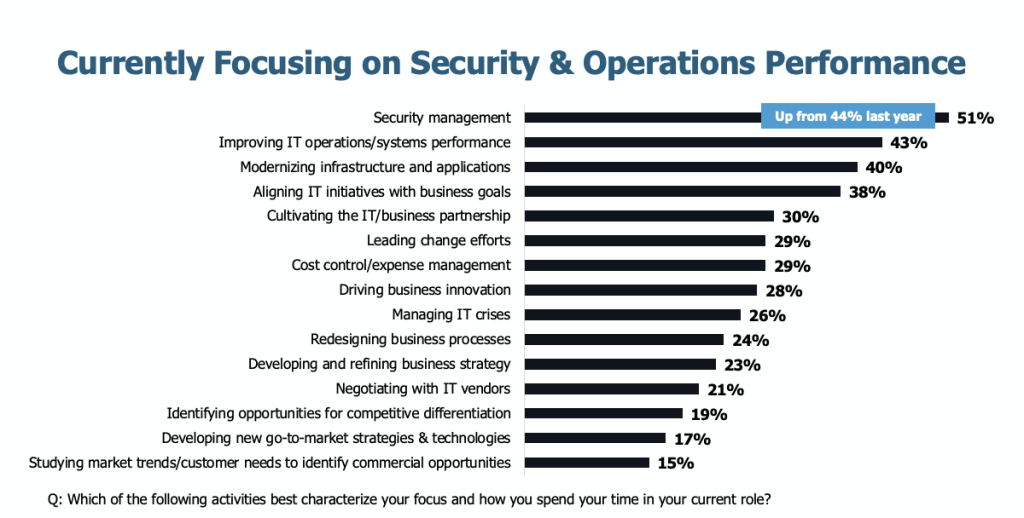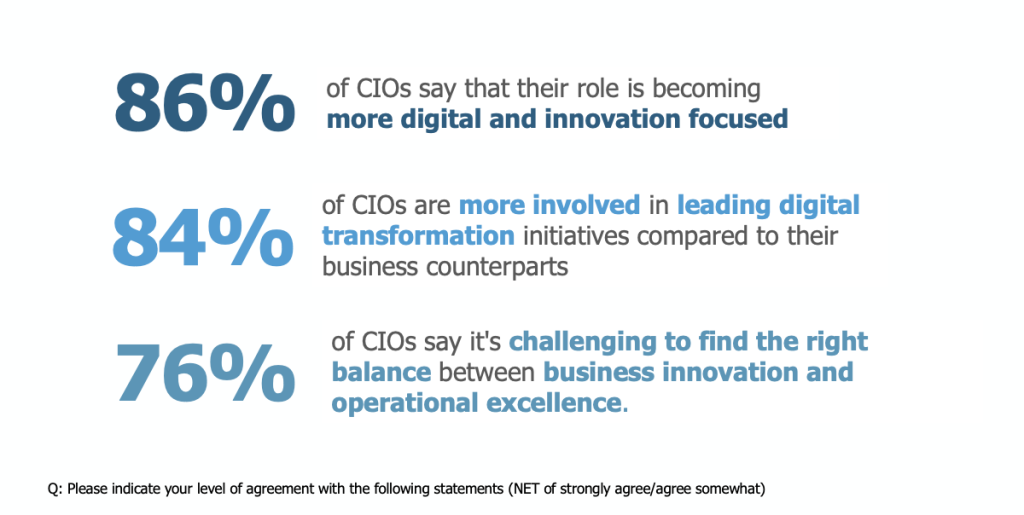CIOs are once again walking a tightrope between innovation and operational excellence — this time, buoyed by strong LOB alliances and a lingering pandemic glow.
CIO
By Beth Stackpole
Contributing writer
MAR 21, 2022
If there’s one thing Jamie Holcombe has learned from his decades-long career as a public and private sector IT leader, it’s how to be a good salesman.
Staying razor-focused on business benefits and communicating in a language everyone understands is central to successful IT initiatives, whether the project involves state-of-the-art technology like robotic process automation (RPA) or is a bit more mundane, like upgrading an aging data center.
Now, fresh off a pandemic-fueled cycle of accelerated innovation, Holcombe is channeling his vaunted sales skills to drive an upcoming IT agenda centered on foundational areas like optimization, security, and enterprise resiliency.
Holcombe, CIO for the United States Patent and Trademark Office (USPTO), is not the least bit concerned that this year’s focus on the practical, not the trend-setting, will cause any setback to IT’s standing in the business.
Unlike years past, he believes the CIO is well situated to weather a back-to-basics IT deployment cycle without undermining status or ceding any leadership ground. “Everyone realizes that technology is significant-we’ve earned the seat at the table and have everyone’s ear,” he explains.
“You lose it by talking geek speak or focusing on pet projects that have nothing to do with the business mission. Make sure you talk to colleagues in business terms so they understand how you’re delivering for them.”
Like so many companies coming off a two-year cycle of near-non-stop digitization, USPTO is in a bit of recalibration mode.
While still pursuing innovation on a parallel track to support remote work and to improve customer, supplier, and employee engagement, companies across sectors are in the midst of a governance cycle to ensure the wave of pandemic-era digital investments are fully optimized and delivering value for the business.

The pivot back to foundational IT work was reflected in CIO.com’s 2022 State of the CIO research, which surveyed 985 IT leaders and 250 line of business (LOB) participants.
Eight-five percent of IT leaders surveyed this year devoted time to transformational responsibilities,
- including modernizing infrastructure and applications (40%),
- aligning IT initiatives with business goals (38%), and
- cultivating the IT/business partnership (30%).
Functional tasks also consumed a large part of the CIO agenda this year, cited by 84% of survey respondents,
- with security management (51%),
- improving IT operations and systems performance (43%), and
- controlling costs and expense management (29%) among the top imperatives.
Unlike last year when business strategy took precedence for 67% of respondents, …
… only 60% of 2022 State of the CIO respondents spent time on activities such as driving business innovation, developing strategy, or identifying opportunities for competitive differentiation.
The top CEO priorities for IT leadership also revealed a growing desire to align years of technology investment with operational excellence while ensuring digital initiatives are running on all cylinders and delivering the proper business outcomes.
For example, the C-suite’s №1 directive for CIOs this year was to upgrade IT and data security to reduce corporate risk, cited by a third of survey respondents.
A call to strengthen IT/business collaboration was also top of mind, referenced by 28% of respondents.
In comparison, leading digital business transformation-a top imperative for 42% of respondents to last year’s survey and 39% in the 2020 State of the CIO-was a top three CEO objective for only 28% of 2022 State of the CIO respondents.

The natural cycle swings leave IT leaders grappling with how to strike the right balance between business innovation and operational excellence-a major issue for three quarters (76%) of respondents to this year’s survey.
The natural cycle swings leave IT leaders grappling with how to strike the right balance between business innovation and operational excellence
While finding the right footing has always been a challenge, the need to advance the dual business imperatives on a parallel track was particularly acute this past year, especially after a period of whirlwind digital innovation.
“As always, it’s a tale of having to do both,” notes Bess Healy, senior vice president and CIO at Stamford, Conn.-based financial services company Synchrony. “The fundamentals are key, but not at the expense of innovation.
We can’t take our eye off the ball or lose an opportunity to seize on the acceleration we are driving every day with our digital-first experiences and modernization.”


Aiming for operational excellence
Given the frenetic pace of technology deployment these last few years, companies like Menlo Park, Calif.-based venture capital firm Sequoia Capital and Houston, Texas-based waste management and environmental services provider WM are making it a priority to finish what was started and refine processes to ensure optimal ROI.
Given the frenetic pace of technology deployment these last few years, companies …are making it a priority to finish what was started and refine processes to ensure optimal ROI.
After a wholesale pivot to remote operations in 2020, Sequoia Capital’s IT group turned attention to preparing for a transition to hybrid work, including the upgrading of networks, reconfiguring conference rooms with new camera technologies, changing business processes to better support collaboration, and equipping employees with proper equipment setups, both at home and in office.
“Some projects were started and not completed because of delays with the supply chain and having equipment on back order,” says Avon Puri, the company’s global chief digital officer.
“We are now digesting innovation and making sure everything works.” Next on the agenda: Looking for opportunities to automate key business processes and ramping up security, he adds.

WM is also in the midst of absorbing and capitalizing on a major business enablement program that included moving its data center to the cloud and modernizing its network infrastructure, according to Erika Walk, the firm’s senior director, digital business services.
Moving forward, there are efforts to improve workspace management and the employee experience thanks to the infrastructure investment, which resulted in savings now funneled to continuous improvement.
The efforts to bolster employee experience and engagement will help to elevate the Digital group’s role and keep technology central to all conversations related to business transformation, Walk says.
“We continue to stay at the table by building and innovating with partners on the operational or sustainability side,” she explains.
“And the infrastructure programs we put in place allow us to realize savings that we can reinvest in other areas of innovation.”
Sequoia and WM are in good stead.
Among the 2022 State of the CIO respondents,
- 46% are advancing efforts to increase operational efficiency
- compared to only 34% in the prior year’s survey.
Transformation of existing business processes, including automation and integration,
- was a top imperative for 41% of respondents
- while improving customer experience (42%)
- as well as employee productivity (27%) ranked high on the CIO agenda.
By far, the most significant area of ongoing IT investment was in cybersecurity-no real surprise given the CEO mandate to minimize corporate exposure and in light of the seemingly constant ransomware attacks and high-profile data breaches.
- Almost half of survey respondents (49%) cited increasing cybersecurity protections as the top business initiative driving IT investments, up dramatically from 34% in 2021.
- Security and risk management is the highest-ranked technology initiative commanding IT investment this year, cited by 45% of respondents.
- And as part of the technology roadmap to enable hybrid work, almost half (46%) of survey respondents flagged improving cybersecurity protections as a major imperative.
By far, the most significant area of ongoing IT investment was in cybersecurity
While cybersecurity has been a boardroom-level issue for the last few years, the conversation is now broader, expanding to IT and business resiliency, notes Satya Jayadev, vice president and CIO at Skyworks Solutions, a semiconductor manufacturer based in Irvine, Calif. Skyworks is both adopting a defensive posture (i.e., identifying and thwarting attacks) and mapping out an offensive strategy to get systems back up and running in an expedited timeframe.
“This is not just an IT effort, but an IT and business effort that involves business continuity and crisis management,” explains Jayadev, who notes that Skyworks has carved out a separate organization within IT to concentrate on this area.

Because of technology’s enabling role during the pandemic, IT is now part of every ideation discussion within the Skyworks organization, whether related to security and resiliency or some other form of digital innovation.
Increasingly, it’s become difficult to distinguish who plays what role on cross-functional teams, Jayadev says.
“The investments we made in improving infrastructure and in the application space have resulted in business users feeling the power of IT,” he explains.
“The gray line between business and IT is basically gone,” says Jayadev, citing as an example a recent interchange with a third-party consultant who couldn’t tell where to direct questions about technology and tools.
“They couldn’t tell who was IT or LOB,” he quips. “That was a massive power statement that I highlighted to business leaders.”

Innovation leadership still a must
Concerns that CIOs may shed a bit of their pandemic luster should be put to rest by the 2022 State of the CIO findings.
Nearly three-quarters of responding CIOs (74%) are confident that the heightened visibility of the CIO role, sparked by their pandemic efforts, will persist.
LOB respondents, who oftentimes are at odds with the CIO perspective of the role, were also firmly in that camp: More than three quarters (78%) expect CIOs’ elevated status to continue regardless of cyclical shifts in IT focus.
Moreover, CIOs are increasingly seen as a changemaker, taking the lead on business and technology initiatives-a view shared by the lion’s share of CIOs (84%) and LOB (75%) respondents.
This year’s research also confirmed CIOs’ dominant leadership role in defining and spearheading digital innovation.
Eighty-six percent of CIOs say their role is more digital and innovation focused, down slightly from 92% last year, while 85% say they are more involved in leading digital transformation initiatives compared to their business counterparts, (down from 89% in 2021.

At Synchrony, there’s a continued push for modernization and an up-leveling of its cybersecurity posture, but not at the expense of its digital-first roadmap, which is all about transforming the customer experience across channels.
Building on its solid foundation of hybrid cloud, open APIs, and microservices, Synchrony is embracing a product mindset for technology deployment that will transcend multiple retail and commerce partners.
“Instead of delivering capabilities that work at an account level with an individual partner, we are looking at how to treat customers across multiple partners and thinking about the everyday digital experience across a suite of products,” Healy explains.
Because there’s a clear understanding of the game-changing power of technology, IT is seen as the digital-first innovation leader as long as it remains focused on shared goals and business outcomes.
Nurturing key partnerships and keeping lines of communication open and flowing with a regular exchange of ideas is crucial to maintaining that alignment, Healy says.
“If the CIO or technology organization isn’t regularly talking to commercial or product leadership, that becomes a real hurdle,” she says.
“We make it a point to engage and connect to understand what’s happening in the platform and product teams.”

Strategic advisor and partner to the business
Based on this year’s research, it appears IT leaders have figured out a winning formula for building trust with LOB peers and effectively cultivating business user engagement.
CIOs remain the go-to resource for navigating technology decisions
- more than half (52%) of IT leaders surveyed this year categorized CIOs as a strategic advisor who proactively identifies business opportunities and makes recommendations
- while 26% viewed the CIO as a consultant, providing advice and guidance on technology selection.
- Only 10% of respondents turn to the CIO for the sole purpose of risk assessment.
Even with this year’s focus on the fundamentals, LOB’s perspective on IT leadership is more in lockstep with the CIO’s own take on the role and responsibilities.
The majority of LOB respondents to the 2022 State of the CIO survey (58%) view the top IT executive as a strategic advisor, proactively seeking their help on identifying business needs, making technology recommendations, and helping sort through provider selections while 21% tap IT leadership as a consulting resource.
Three quarters of LOB respondents to this year’s survey recognize the CIO as a changemaker-a significant endorsement of their leadership prowess-and 78% believe the CIO role, elevated during the pandemic, will remain front and center going forward.
Even when it comes to the impact on digital transformation, LOB respondents were more apt to acknowledge CIOs this year compared to prior-year surveys.
Seventy-nine percent of LOB respondents recognize the CIOs’ role as more digital and innovation focused while 78% agree that the CIO plays an outsized role in leading digital transformation-far more than any of its executive counterparts.
In comparison, in the 2021 State of the CIO survey, only 62% of LOB respondents viewed the CIO role through a digital and innovation lens and only 59% thought CIOs shouldered more of the digital transformation agenda compared to other top-level executives.
At Oshkosh Corp., a manufacturer of specialty trucks and access equipment based in Oshkosh, Wis., building a “customer obsessive” IT organization and cultivating that brand internally has everything to do with building trust and forging close alignment with the business, regardless of whether the collaboration is for an AI-enabled supply chain or a simple help desk engagement.
The IT organization enlists automation wherever possible to streamline the user experience and simplify workflows.
Recent examples include enlisting machine learning to predict purchase order shortages, leveraging RPA to automate a previously manual past due purchase order review process, and employing chatbots to streamline common helpdesk interactions.
“Our trusted relationship with business helps keeps us laser focused on co-creating value at the time when it is needed,” says Anupam Khare, senior vice president and CIO, digital technology.
At USPTO, Holcombe’s IT organization has switched from a project management orientation to product management approach to forge closer ties with internal business stakeholders and to foster IT/business alignment.
“A project management approach wasn’t giving enough business value-there were too many starts and stops, and procurement was unwieldy,” he explains. “Now the product owners are the actual business units, not the IT staff. We provide support and guidance.”
In the end, it boils down to an ability to cement successful partnerships that will keep IT relevant and in high demand despite the ups and downs of investment cycles and year-over-year shifts in technology focus.
Originally published at https://www.cio.com on March 21, 2022.
Names mentioned
Jamie Holcombe, U.S. Patent and Trademark Office
Erika Walk, the firm’s senior director, digital business services.
Satya Jayadev, vice president and CIO at Skyworks Solutions
Anupam Khare, Oshkosh Corporation












